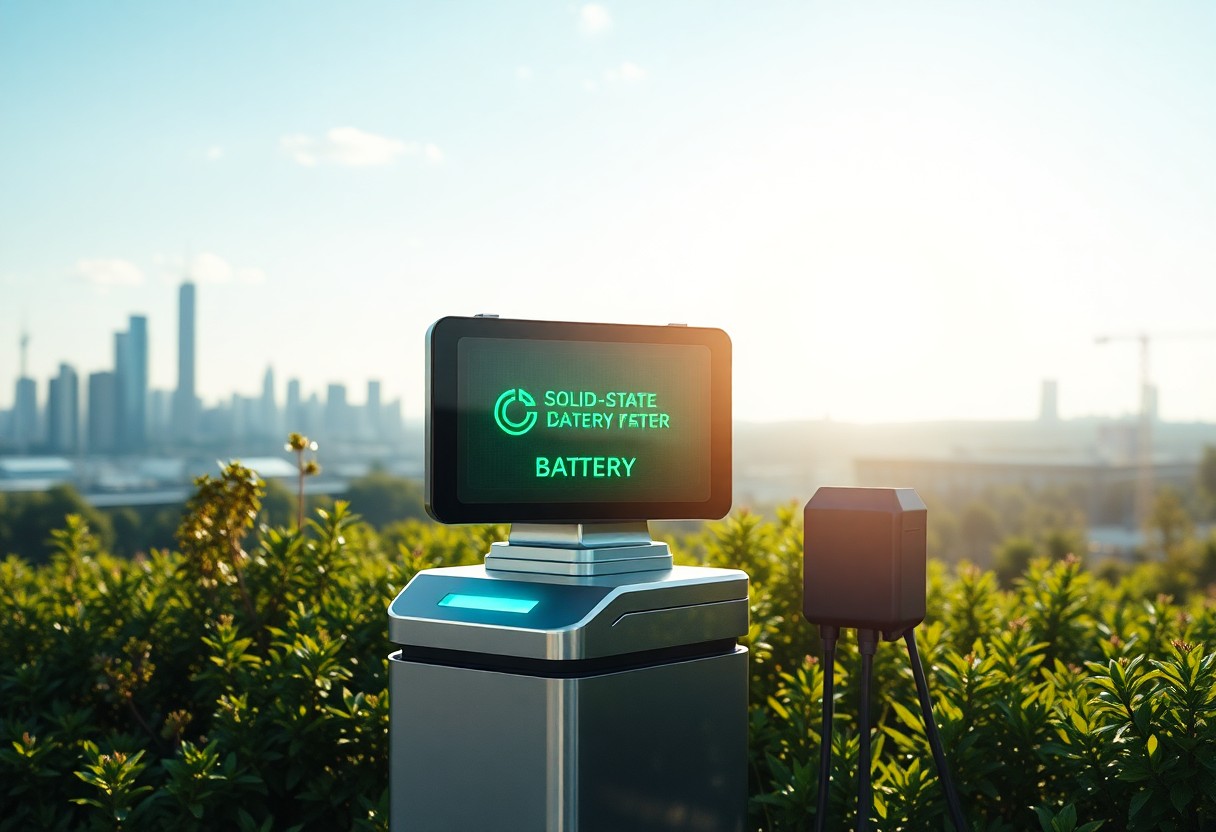As you explore the world of sustainable energy, you’re likely to encounter solid-state batteries, a game-changing technology transforming the way you store green energy. Your search for efficient and reliable energy storage solutions ends with solid-state batteries, which offer enhanced safety, faster charging, and increased energy density. You will discover how these innovative batteries are poised to revolutionize the renewable energy landscape, enabling you to harness and store energy more effectively, and paving the way for a cleaner, more sustainable future.
Fundamentals
To understand the impact of solid-state batteries on green energy storage, it’s necessary to grasp the basics. You’ll learn how these batteries work and their benefits, helping you appreciate their potential to revolutionize the industry.
Definition of Solid-State Batteries
Behind the innovation of solid-state batteries lies a simple concept: replacing the liquid electrolyte with a solid material, enhancing safety and performance. You’ll discover how this design improvement enables more efficient energy storage and opens up new possibilities for your use.
Comparison with Traditional Batteries
Across various aspects, solid-state batteries differ from traditional ones. You can compare their characteristics in the following
Comparison Table
| Characteristics | Traditional Batteries |
|---|---|
| Lifetime | Limited cycles |
| Safety | Risk of explosion |
to see the advantages of solid-state batteries.
Batteries with solid-state designs offer several benefits, as shown in the
Benefits Table
| Aspect | Solid-State Batteries |
|---|---|
| Energy Density | Higher capacity |
| Charging Speed | Faster charging |
. As you explore these advantages, you’ll see how solid-state batteries can enhance your energy storage capabilities, making them an attractive option for your green energy needs.
1. Higher energy density for longer-lasting power storage.
2. Enhanced safety with reduced risk of fire hazards.
3. Faster charging times improve user convenience and efficiency.
4. Eco-friendly materials minimize environmental impact.
5. Longer lifespan reduces waste and replacement frequency.
6. Versatile applications in electric vehicles and renewable energy.
Advancements
There’s significant progress in solid-state battery technology, and you can learn more about it by visiting Renewable Energy Storage: Why Solid State Batteries Are A Game Changer. This innovation is revolutionizing the way you think about green energy storage.
Improved Energy Density
Above all, solid-state batteries offer higher energy density, allowing you to store more energy in a smaller space, making them ideal for your renewable energy needs.
Enhanced Safety Features
By design, solid-state batteries have enhanced safety features, reducing the risk of overheating and explosions, giving you peace of mind when using them for your green energy storage.
Even more, these safety features ensure that your solid-state batteries will last longer and perform better, making them a worthwhile investment for your renewable energy storage needs, and you will appreciate the reliability they provide.

Applications
For your green energy storage needs, solid-state batteries are being explored in various areas, as you can learn more about in The Trend of Energy Storage System: Solid-State Batteries.
Electric Vehicles
Around your city, you’ll find that electric vehicles are becoming increasingly popular, and solid-state batteries are being considered for their potential to improve your driving experience.
Renewable Energy Systems
By investing in renewable energy systems, you can harness the power of solar and wind energy, and solid-state batteries can help you store this energy for later use.
Due to their higher energy density and longer lifespan, solid-state batteries are an attractive option for your renewable energy systems, allowing you to maximize your energy storage and achieve greater efficiency in your systems.

Challenges
Your transition to solid-state batteries is not without obstacles, as several challenges need to be addressed to fully harness their potential, including scalability, cost, and materials and manufacturing processes.
Scalability and Cost
Around the issue of scaling up production while reducing costs, you will find that solid-state batteries require significant investment in new manufacturing technologies and processes to make them competitive with traditional lithium-ion batteries.
Materials and Manufacturing
Similarly, scaling up the production of solid-state batteries poses significant challenges, particularly in terms of developing suitable materials and manufacturing processes that can ensure consistency and reliability.
Further, as you examine deeper into the materials and manufacturing aspects, you will discover that the development of solid-state batteries requires the creation of new materials with specific properties, such as high ionic conductivity and stability, which can be a complex and time-consuming process, involving significant research and development efforts to overcome the existing limitations and barriers.

Innovations
Despite the existing battery technologies, you can now explore new developments that are transforming the energy storage landscape, including learning more about Unlocking the Future: How Batteries Will Power the Energy Revolution, which highlights the significance of advancements in this field.
New Materials and Designs
On the forefront of solid-state battery development, you will find novel materials and designs that enhance performance, safety, and efficiency, allowing you to consider the potential of these innovations for your own applications.
Advancements in Charging Technologies
Beside the development of new materials, you will also discover improvements in charging technologies that enable faster, more reliable, and sustainable energy storage solutions, which you can leverage to optimize your energy usage.
Innovations in charging technologies are particularly significant as you look to integrate solid-state batteries into your daily life, providing you with the ability to charge your devices quickly and efficiently, and opening up new possibilities for widespread adoption of green energy storage solutions, allowing you to play a part in reducing your environmental footprint.
Impact
Once again, you will notice a significant change in the way energy is stored and utilized with the advent of solid-state batteries, which will transform your understanding of green energy storage.
Environmental Benefits
Any effort to reduce your carbon footprint will be supported by solid-state batteries, as they offer a more sustainable and eco-friendly alternative to traditional battery technologies, allowing you to contribute to a cleaner environment.
Economic Implications
About the cost, you should consider that solid-state batteries have the potential to significantly reduce your expenses in the long run, as they are more efficient and require less maintenance than traditional batteries.
This economic advantage will become even more significant as you scale up your use of solid-state batteries, allowing you to allocate your resources more efficiently and make your energy storage solutions more cost-effective, thereby enhancing your overall energy management strategy and enabling you to make the most of your investment in green energy storage.
To wrap up
The development of solid-state batteries is transforming your approach to green energy storage. You can now expect more efficient, safer, and longer-lasting energy storage solutions. As you transition to solid-state batteries, your energy storage capabilities will improve, enabling a more widespread adoption of renewable energy sources and reducing your reliance on fossil fuels, ultimately contributing to a more sustainable future.


